-
Executive Summary
-
Scope of the Report
-
Market Definition
-
Scope of the Study
- Research Objectives
- Assumptions & Limitations
-
Market Structure
-
Market Research Methodology
-
Research Process
-
Secondary Research
-
Primary Research
-
Forecast Model
-
Market Landscape
-
Supply Chain Analysis
- Raw Material Suppliers
- Manufacturers/Producers
- Distributors/Retailers/Wholesalers/E-Commerce
- End Users
-
Porter’s Five Forces Analysis
- Threat of New Entrants
- Bargaining Power of Buyers
- Bargaining Power of Suppliers
- Threat of Substitutes
- Internal Rivalry
-
Market Dynamics of Global Organic Snacks Market
-
Introduction
-
Drivers
-
Restraints
-
Opportunities
-
Challenges
-
Global Organic Snacks Market, by Product Type
-
Introduction
-
Cookies & Crackers
- Market Estimates & Forecast, 2024–2032
- Market Estimates & Forecast, by Region, 2024–2032
-
Dried Fruits
- Market Estimates & Forecast, 2024–2032
- Market Estimates & Forecast, by Region, 2024–2032
-
Puffs & Chips
- Market Estimates & Forecast, 2024–2032
- Market Estimates & Forecast, by Region, 2024–2032
-
Energy Bars
- Market Estimates & Forecast, 2024–2032
- Market Estimates & Forecast, by Region, 2024–2032
-
Meat Snacks
- Market Estimates & Forecast, 2024–2032
- Market Estimates & Forecast, by Region, 2024–2032
-
Others
- Market Estimates & Forecast, 2024–2032
- Market Estimates & Forecast, by Region, 2024–2032
-
Global Organic Snacks Market, by Packaging Type
-
Introduction
-
Pouches
- Market Estimates & Forecast, 2024–2032
- Market Estimates & Forecast, by Region, 2024–2032
-
Cartons
- Market Estimates & Forecast, 2024–2032
- Market Estimates & Forecast, by Region, 2024–2032
-
Others
- Market Estimates & Forecast, 2024–2032
- Market Estimates & Forecast, by Region, 2024–2032
-
Global Organic Snacks Market, by Distribution Channel
-
Introduction
-
Store-Based
- Market Estimates & Forecast, 2024–2032
- Market Estimates & Forecast, by Region, 2024–2032
- Supermarkets & Hypermarkets
- Convenience Stores
- Others
-
Non-Store-Based
- Market Estimates & Forecast, 2024–2032
- Market Estimates & Forecast, by Region, 2024–2032
-
Global Organic Snacks Market, by Region
-
Introduction
-
North America
- Market Estimates & Forecast, 2024–2032
- Market Estimates & Forecast, by Product Type, 2024–2032
- Market Estimates & Forecast, by Packaging Type, 2024–2032
- Market Estimates & Forecast, by Distribution Channel, 2024–2032
- US
- Canada
- Mexico
-
Europe
- Market Estimates & Forecast, 2024–2032
- Market Estimates & Forecast, by Product Type, 2024–2032
- Market Estimates & Forecast, by Packaging Type, 2024–2032
- Market Estimates & Forecast, by Distribution Channel, 2024–2032
- Germany
- France
- Italy
- Spain
- UK
- Rest of Europe
-
Asia-Pacific
- Market Estimates & Forecast, 2024–2032
- Market Estimates & Forecast, by Product Type, 2024–2032
- Market Estimates & Forecast, by Packaging Type, 2024–2032
- Market Estimates & Forecast, by Distribution Channel, 2024–2032
- China
- India
- Japan
- Australia & New Zealand
- Rest of Asia-Pacific
-
Rest of the World (RoW)
- Market Estimates & Forecast, 2024–2032
- Market Estimates & Forecast, by Product Type, 2024–2032
- Market Estimates & Forecast, by Packaging Type, 2024–2032
- Market Estimates & Forecast, by Distribution Channel, 2024–2032
- South America
- Middle East
- Africa
-
Company Landscape
-
Introduction
-
Market Strategy
-
Key Development Analysis
-
(Expansions/Mergers and Acquisitions/Joint Ventures/New Product Developments/Agreements/Investments
-
Company Profiles
-
Conagra Brands, Inc.
- Company Overview
- Financial Updates
- Product/Business Segment Overview
- Strategy
- Key Developments
- SWOT Analysis
-
General Mills, Inc.
- Company Overview
- Financial Updates
- Product/Business Segment Overview
- Strategy
- Key Developments
- SWOT Analysis
-
Hain Celestial
- Company Overview
- Financial Updates
- Product/Business Segment Overview
- Strategy
- Key Developments
- SWOT Analysis
-
Hormel Foods Corporation
- Company Overview
- Financial Updates
- Product/Business Segment Overview
- Strategy
- Key Developments
- SWOT Analysis
-
SunOpta
- Company Overview
- Financial Updates
- Product/Business Segment Overview
- Strategy
- Key Developments
- SWOT Analysis
-
YummyEarth, Inc.
- Company Overview
- Financial Updates
- Product/Business Segment Overview
- Strategy
- Key Developments
- SWOT Analysis
-
Utz Quality Food, LLC
- Company Overview
- Financial Updates
- Product/Business Segment Overview
- Strategy
- Key Developments
- SWOT Analysis
-
Eat Real
- Company Overview
- Financial Updates
- Product/Business Segment Overview
- Strategy
- Key Developments
- SWOT Analysis
-
Creative Snacks Co.
- Company Overview
- Financial Updates
- Product/Business Segment Overview
- Strategy
- Key Developments
- SWOT Analysis
-
NurturMe
- Company Overview
- Financial Updates
- Product/Business Segment Overview
- Strategy
- Key Developments
- SWOT Analysis
-
Conclusion
-
LIST OF TABLES
-
Global Organic Snacks Market, by Region, 2024–2032 (USD Million)
-
Global Organic Snacks Market, by Product Type, 2024–2032 (USD Million)
-
Global Organic Snacks Market, by Packaging Type, 2024–2032 (USD Million)
-
Global Organic Snacks Market, by Distribution Channel, 2024–2032 (USD Million)
-
North America: Organic Snacks Market, by Country, 2024–2032 (USD Million)
-
North America: Organic Snacks Market, by Product Type, 2024–2032 (USD Million)
-
North America: Organic Snacks Market, by Packaging Type, 2024–2032 (USD Million)
-
North America: Organic Snacks Market, by Distribution Channel, 2024–2032 (USD Million)
-
US: Organic Snacks Market, by Product Type, 2024–2032 (USD Million)
-
US: Organic Snacks Market, by Packaging Type, 2024–2032 (USD Million)
-
US: Organic Snacks Market, by Distribution Channel, 2024–2032 (USD Million)
-
Canada: Organic Snacks Market, by Product Type, 2024–2032 (USD Million)
-
Canada: Organic Snacks Market, by Packaging Type, 2024–2032 (USD Million)
-
Canada: Organic Snacks Market, by Distribution Channel, 2024–2032 (USD Million)
-
Mexico: Organic Snacks Market, by Product Type, 2024–2032 (USD Million)
-
Mexico: Organic Snacks Market, by Packaging Type, 2024–2032 (USD Million)
-
Mexico: Organic Snacks Market, by Distribution Channel, 2024–2032 (USD Million)
-
Europe: Organic Snacks Market, by Country, 2024–2032 (USD Million)
-
Europe: Organic Snacks Market, by Product Type, 2024–2032 (USD Million)
-
Europe: Organic Snacks Market, by Packaging Type, 2024–2032 (USD Million)
-
Europe: Organic Snacks Market, by Distribution Channel, 2024–2032 (USD Million)
-
Germany: Organic Snacks Market, by Product Type, 2024–2032 (USD Million)
-
Germany: Organic Snacks Market, by Packaging Type, 2024–2032 (USD Million)
-
Germany: Organic Snacks Market, by Distribution Channel, 2024–2032 (USD Million)
-
France: Organic Snacks Market, by Product Type, 2024–2032 (USD Million)
-
France: Organic Snacks Market, by Packaging Type, 2024–2032 (USD Million)
-
France: Organic Snacks Market, by Distribution Channel, 2024–2032 (USD Million)
-
Italy: Organic Snacks Market, by Product Type, 2024–2032 (USD Million)
-
Italy: Organic Snacks Market, by Packaging Type, 2024–2032 (USD Million)
-
Italy: Organic Snacks Market, by Distribution Channel, 2024–2032 (USD Million)
-
Spain: Organic Snacks Market, by Product Type, 2024–2032 (USD Million)
-
Spain: Organic Snacks Market, by Packaging Type, 2024–2032 (USD Million)
-
Spain: Organic Snacks Market, by Distribution Channel, 2024–2032 (USD Million)
-
UK: Organic Snacks Market, by Product Type, 2024–2032 (USD Million)
-
UK: Organic Snacks Market, by Packaging Type, 2024–2032 (USD Million)
-
UK: Organic Snacks Market, by Distribution Channel, 2024–2032 (USD Million)
-
Rest of Europe: Organic Snacks Market, by Product Type, 2024–2032 (USD Million)
-
Rest of Europe: Organic Snacks Market, by Packaging Type, 2024–2032 (USD Million)
-
Rest of Europe: Organic Snacks Market, by Distribution Channel, 2024–2032 (USD Million)
-
Asia-Pacific: Organic Snacks Market, by Country, 2024–2032 (USD Million)
-
Asia-Pacific: Organic Snacks Market, by Product Type, 2024–2032 (USD Million)
-
Asia-Pacific: Organic Snacks Market, by Packaging Type, 2024–2032 (USD Million)
-
Asia-Pacific: Organic Snacks Market, by Distribution Channel, 2024–2032 (USD Million)
-
China: Organic Snacks Market, by Product Type, 2024–2032 (USD Million)
-
China: Organic Snacks Market, by Packaging Type, 2024–2032 (USD Million)
-
China: Organic Snacks Market, by Distribution Channel, 2024–2032 (USD Million)
-
India: Organic Snacks Market, by Product Type, 2024–2032 (USD Million)
-
India: Organic Snacks Market, by Packaging Type, 2024–2032 (USD Million)
-
India: Organic Snacks Market, by Distribution Channel, 2024–2032 (USD Million)
-
Japan: Organic Snacks Market, by Product Type, 2024–2032 (USD Million)
-
Japan: Organic Snacks Market, by Packaging Type, 2024–2032 (USD Million)
-
Japan: Organic Snacks Market, by Distribution Channel, 2024–2032 (USD Million)
-
Australia & New Zealand: Organic Snacks Market, by Product Type, 2024–2032 (USD Million)
-
Australia & New Zealand: Organic Snacks Market, by Packaging Type, 2024–2032 (USD Million)
-
Australia & New Zealand: Organic Snacks Market, by Distribution Channel, 2024–2032 (USD Million)
-
Rest of Asia-Pacific: Organic Snacks Market, by Product Type, 2024–2032 (USD Million)
-
Rest of Asia-Pacific: Organic Snacks Market, by Packaging Type, 2024–2032 (USD Million)
-
Rest of Asia-Pacific: Organic Snacks Market, by Distribution Channel, 2024–2032 (USD Million)
-
Rest of the World (RoW): Organic Snacks Market, by Country, 2024–2032 (USD Million)
-
Rest of the World (RoW): Organic Snacks Market, by Product Type, 2024–2032 (USD Million)
-
Rest of the World (RoW): Organic Snacks Market, by Packaging Type, 2024–2032 (USD Million)
-
Rest of the World (RoW): Organic Snacks Market, by Distribution Channel, 2024–2032 (USD Million)
-
South America: Organic Snacks Market, by Product Type, 2024–2032 (USD Million)
-
South America: Organic Snacks Market, by Packaging Type, 2024–2032 (USD Million)
-
South America: Organic Snacks Market, by Distribution Channel, 2024–2032 (USD Million)
-
Middle East: Organic Snacks Market, by Product Type, 2024–2032 (USD Million)
-
Middle East: Organic Snacks Market, by Packaging Type, 2024–2032 (USD Million)
-
Middle East: Organic Snacks Market, by Distribution Channel, 2024–2032 (USD Million)
-
Africa: Organic Snacks Market, by Product Type, 2024–2032 (USD Million)
-
Africa: Organic Snacks Market, by Packaging Type, 2024–2032 (USD Million)
-
Africa: Organic Snacks Market, by Distribution Channel, 2024–2032 (USD Million)
-
LIST OF FIGURES
-
Global Organic Snacks Market Segmentation
-
Forecast Research Methodology
-
Five Forces Analysis of Global Organic Snacks Market
-
Value Chain of Global Organic Snacks Market
-
Share of Global Organic Snacks Market in 2024, by Country (%)
-
Global Organic Snacks Market, by Region, 2024–2032
-
Global Organic Snacks Market Size, by Product Type, 2024
-
Share of Global Organic Snacks Market, by Product Type, 2024–2032 (%)
-
Global Organic Snacks Market Size, by Packaging Type, 2024
-
Share of Global Organic Snacks Market, by Packaging Type, 2024–2032 (%)
-
Global Organic Snacks Market Size, by Distribution Channel, 2024
-
Share of Global Organic Snacks Market, by Distribution Channel, 2024–2032 (%)
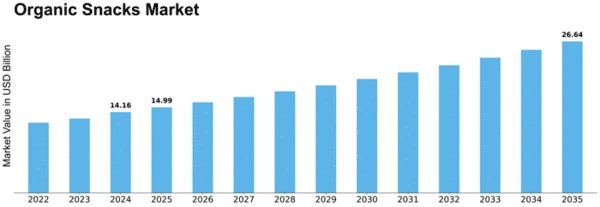


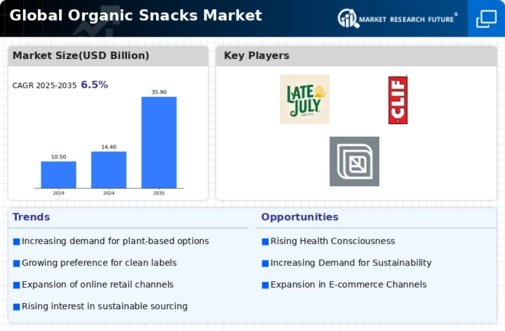


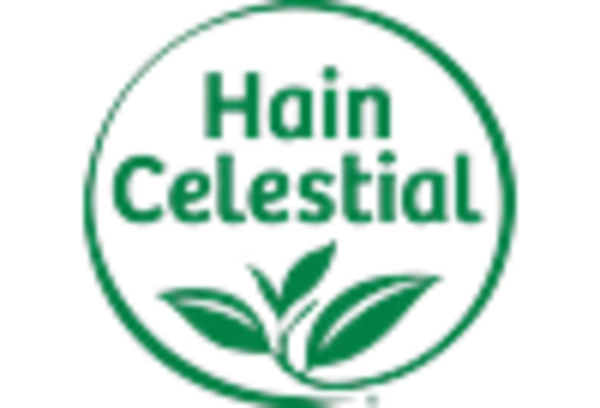
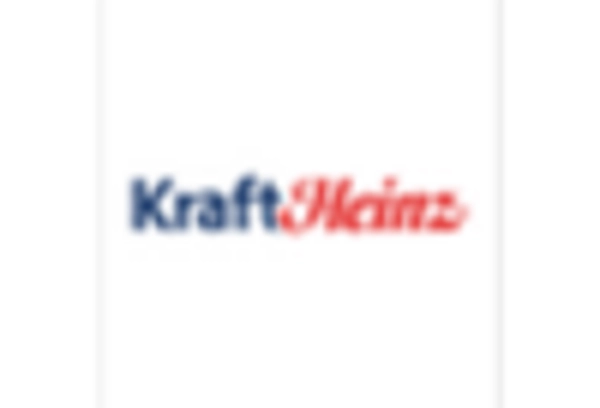

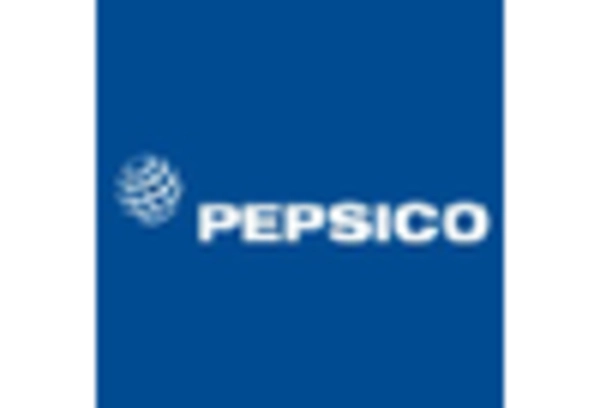









Leave a Comment